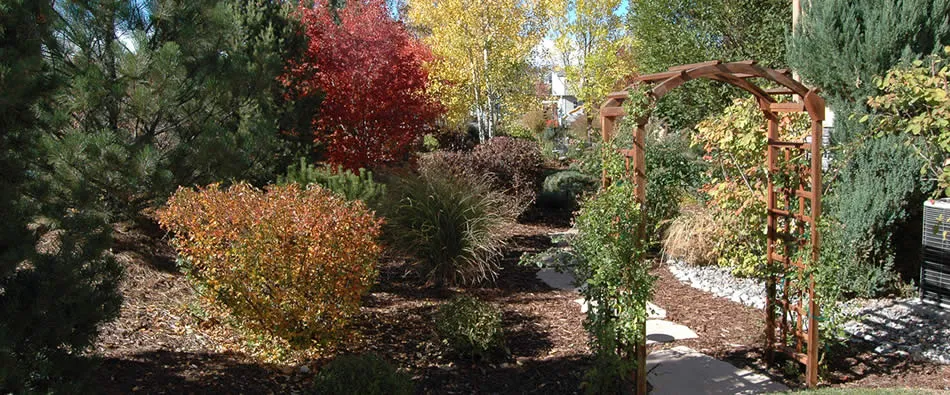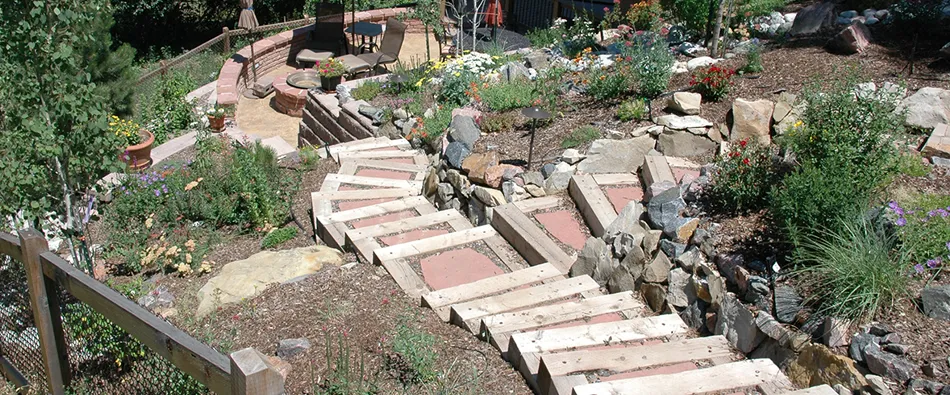Greenhouse benches may be made of cypress, concrete, wire or fiberglass. The material you decide to use will depend on your budget, types of plants you grow, aesthetics and durability. Generally, benches are positioned in a permanent location in a hobby greenhouse, but larger, movable benches are also available.
A bench constructed approximately 30 inches high and no more than three feet wide allows easy access from one side. Legs and a box frame made of two-by-fours with wire pulled over the frame and stapled into place is adequate for many hobbyists. This type of bench is best suited for potted plants.
You might want to build a bench that not only holds potting soil, but allows you to plant directly in the soil. These benches weigh considerably more and require more support.
Benches may also be tiered, but be sure to allow adequate growing space between the tiers. These benches may present a problem when excess moisture from the upper shelf collects on plants on the lower shelf. They may also require additional lighting.
The intensity of sun in the High Plains and Rocky Mountain West means you'll need to provide plants with shade. Fortunately, there are several inexpensive ways to cover greenhouse glass and protect plants from Colorado's intense summer sun. One way is to mix whitewash or hydrated lime with water, then apply the mixture with a paint roller or sprayer over glass surfaces. However, lime solutions are not recommended for aluminum-framed greenhouses. Another inexpensive solution uses one gallon of white latex paint and eight gallons of water. Simply apply the mixture with a paint roller in late spring and it will wash off by the following fall. Commercial shade cloths made of aluminum, vinyl, plastic and other materials are also available.
Other supplies you will need in the greenhouse include a potting bench, substrate storage bins, a seed-storage area, a sink for cleaning, artificial lighting, and hoses and nozzles for watering and cleaning out containers.
You can start with a minimum of equipment and add items each year. A good minimum-maximum thermometer is essential because it will allow you to monitor temperatures in your greenhouse.
Record keeping is also important, because it will allow you to look back and learn from the problems and successes you experienced in previous growing seasons.
Greenhouses can be prefabricated or erected from raw materials, and the variety of shapes, sizes, and construction details offer endless possibilities. Before you start construction, thoroughly investigate the local building codes in your city and county to learn about any possible constraints. Also, if you live in a covenanted community, check with the local homeowners association before you begin construction.
Siting the greenhouse is important for optimal plant growth. Some lots may not allow the flexibility to angle the greenhouse for maximum light-gain in the winter. A southeast orientation or an angle that provides a minimum of three hours of winter sunlight daily is good. Your greenhouse needs protection from the northerly and westerly winds that frequent the Front Range, which may require a windbreak made of plant materials. In addition, greenhouses require utilities, such as electricity and running water. Finally, the greenhouse should be easily accessible from your home.
Greenhouses can be erected directly on the ground with footers placed below the frost line, which is generally three feet along Colorado's Front Range. Other types of greenhouses may have a portable base plate of concrete, wood or metal. A solid permanent foundation may resist settling better than a portable one.
Polycarbonate and acrylic panels are popular alternatives to glass for covering greenhouses, but be sure to purchase specially designed panels for greenhouse use. Polyethylene plastics are energy-savers because of their double-layer of insulation, which reduces heat loss 20 to 30 percent. Greenhouse-grade film plastics, if applied properly to the frame, last 18 to 30 months in Colorado.
It is difficult to have two separate areas for warm and cool temperature requirements for specific crop needs in a small greenhouse. But all plants grow better when the night-time temperature is 10 degrees Fahrenheit lower than the day-time temperature.
A good heating system is also important in Colorado's climate. As a general rule, you will need 200 BTUs per hour per square foot of ground area to keep your standard-design greenhouse at 50 degrees inside when outside temperatures are 10 degrees below zero.
Greenhouses collect solar heat, and on sunny, winter days when the temperature outside is 20 degrees, the temperature inside the greenhouse can reach 65 degrees and above.
When designing your greenhouse, include vents to allow air to be mixed and exchanged. You can effectively cool greenhouses smaller than 200 square feet of ground area with an evaporative cooler. Larger greenhouses are easier to cool with a fan-and-pad system. Special non-loading fans and cooling-pad systems are available through greenhouse supply companies.
Greenhouse heating and cooling systems should be controlled with thermostats placed at bench level in the center of the greenhouse, preferably in a protected area. You also might want to invest in a battery-operated high and low temperature alarm system.






